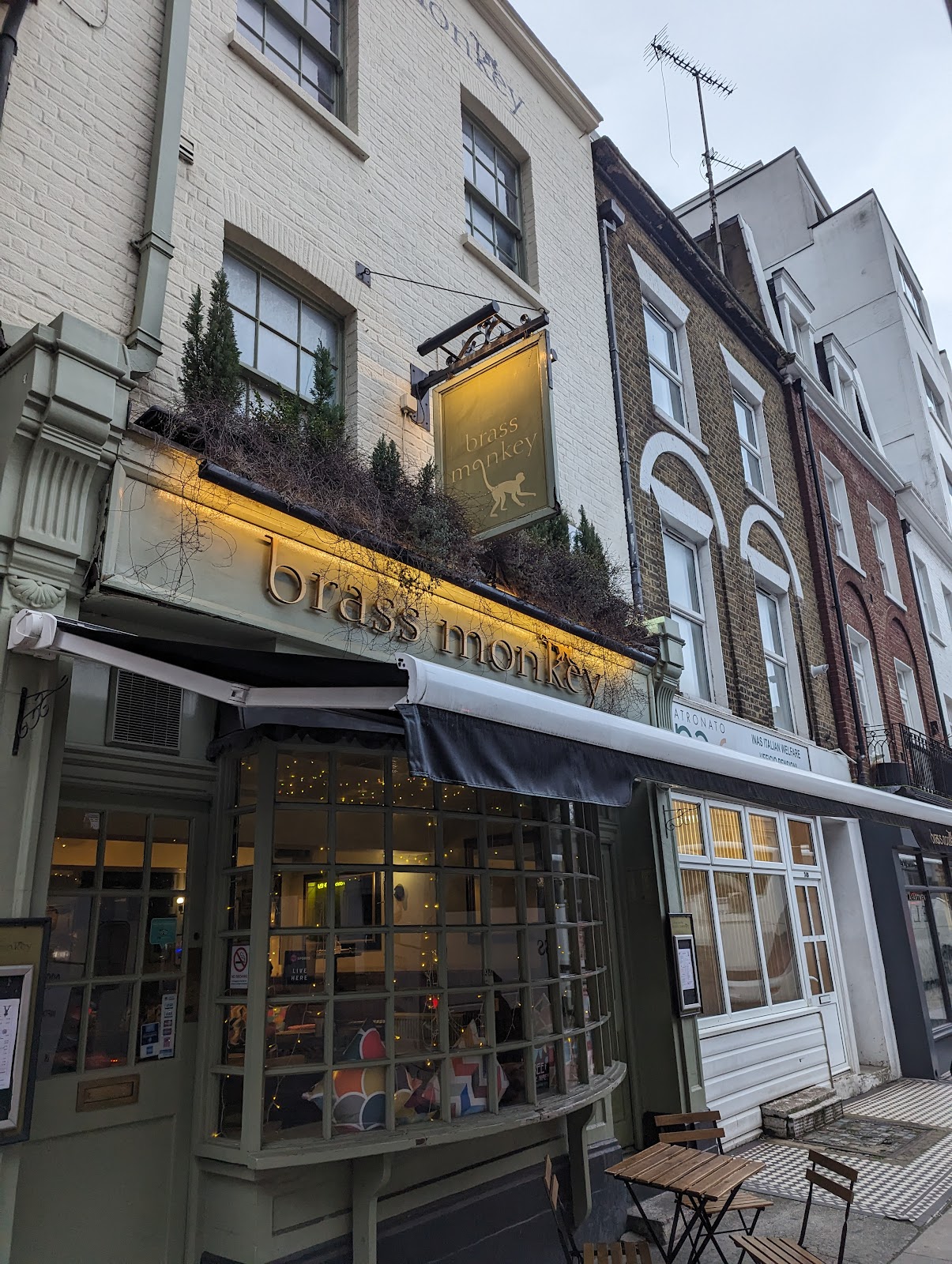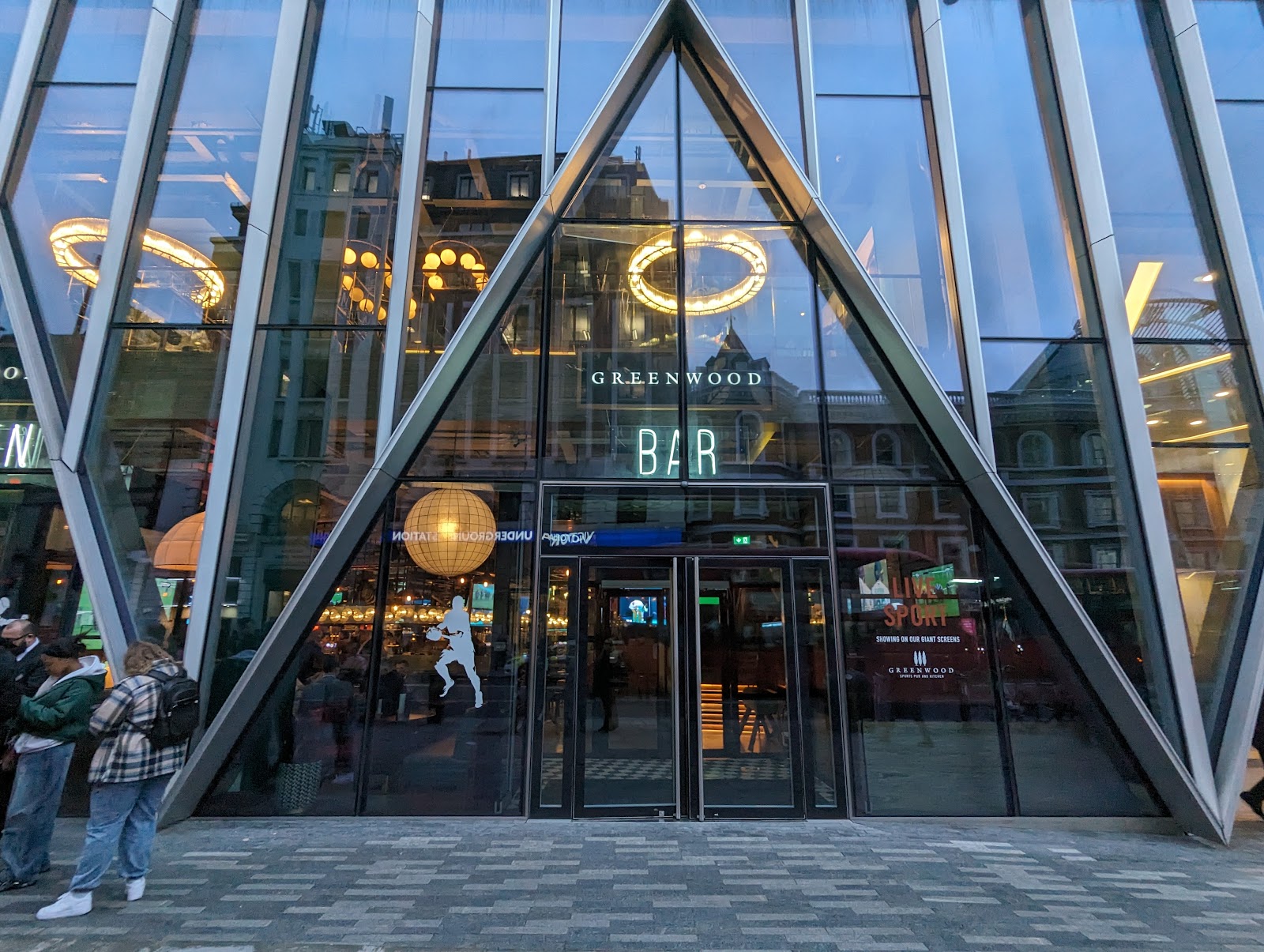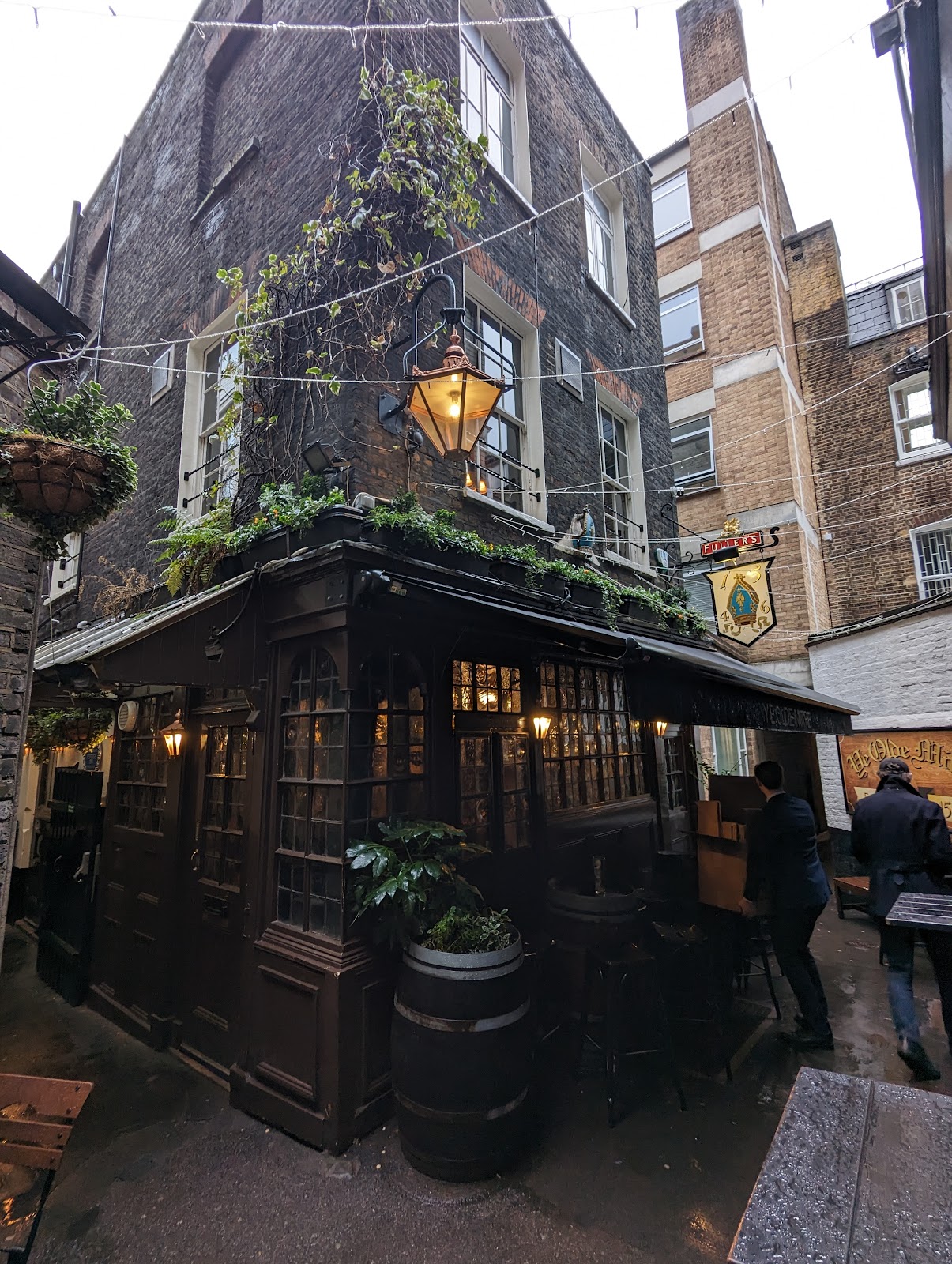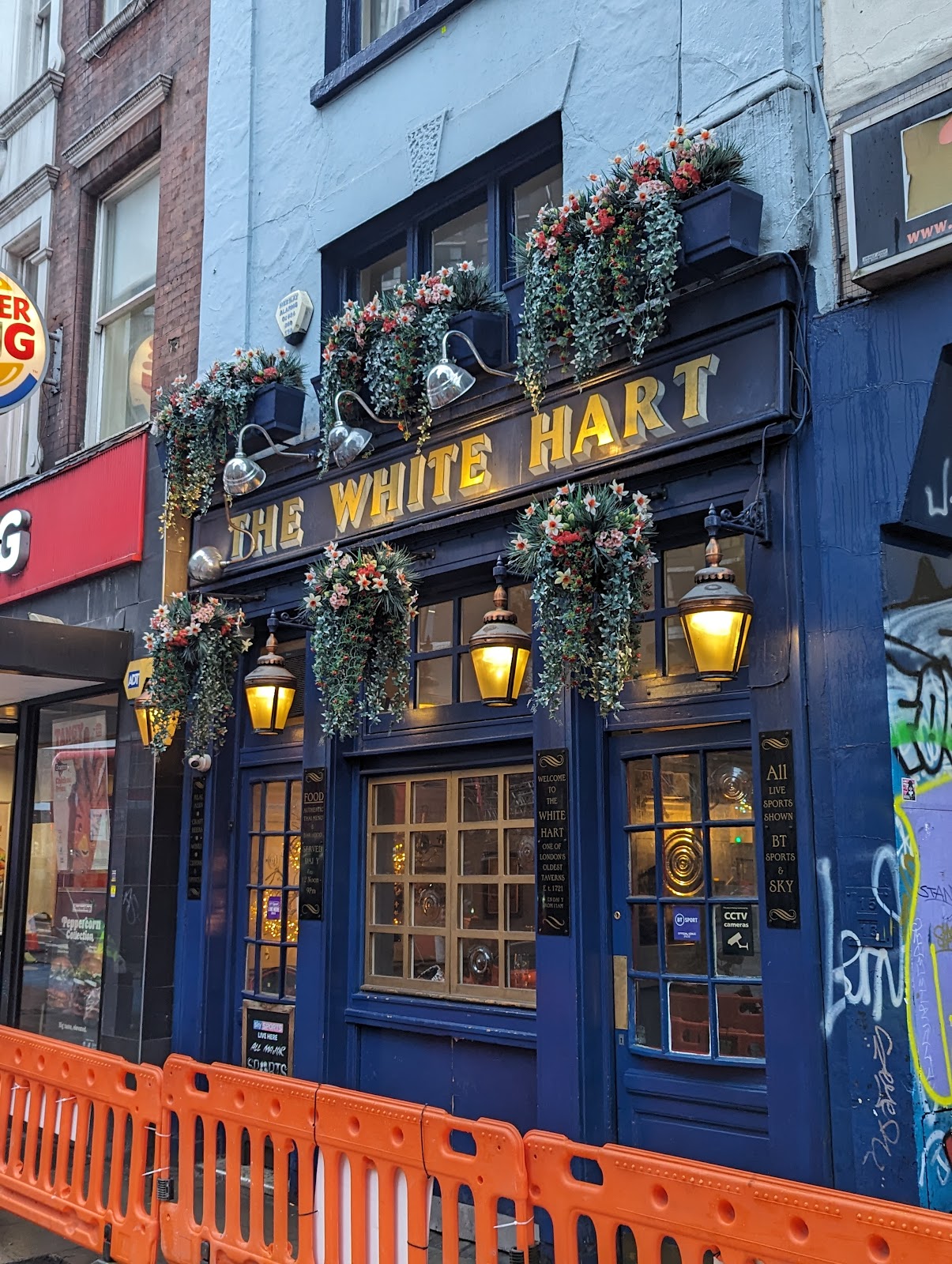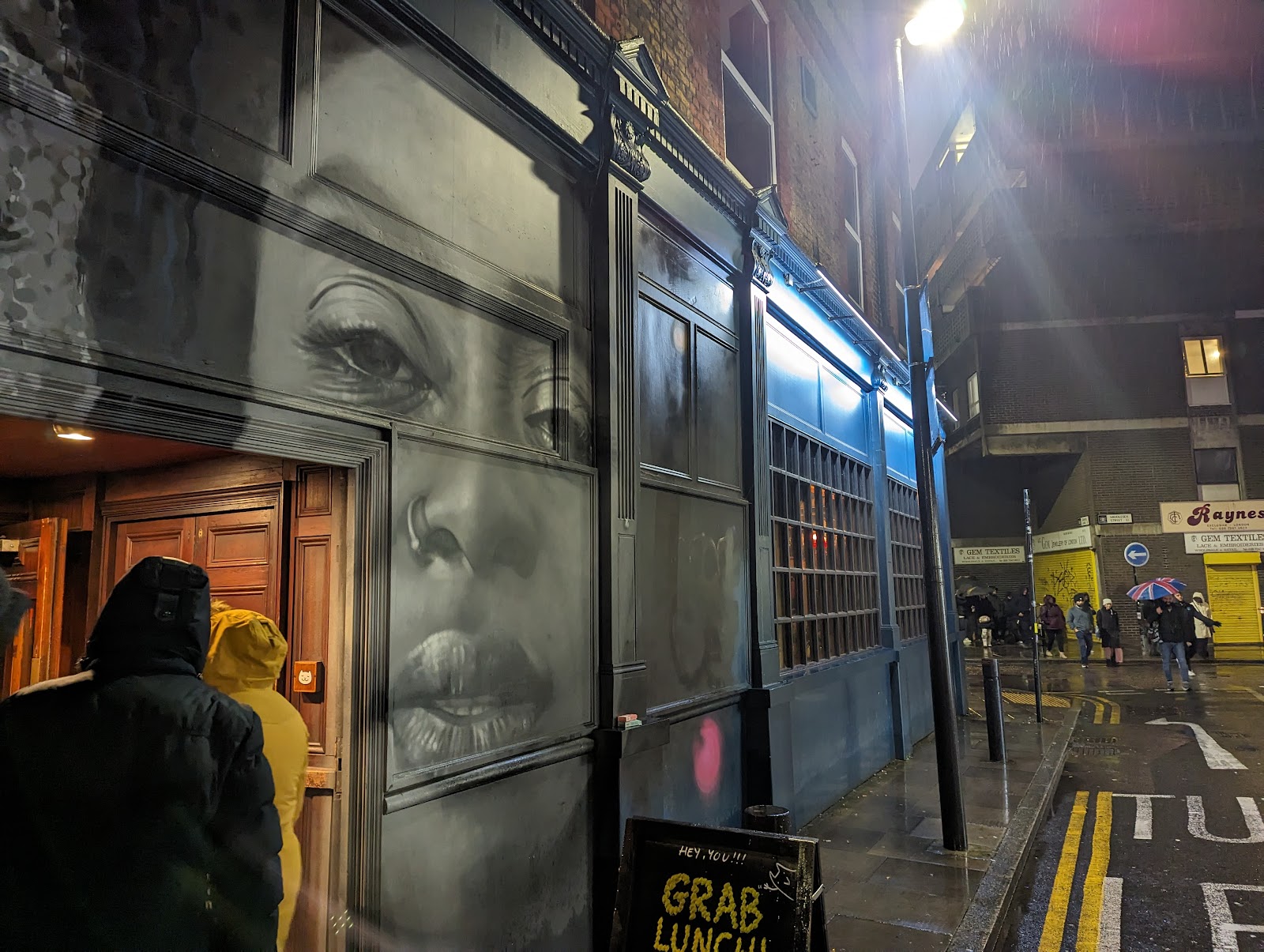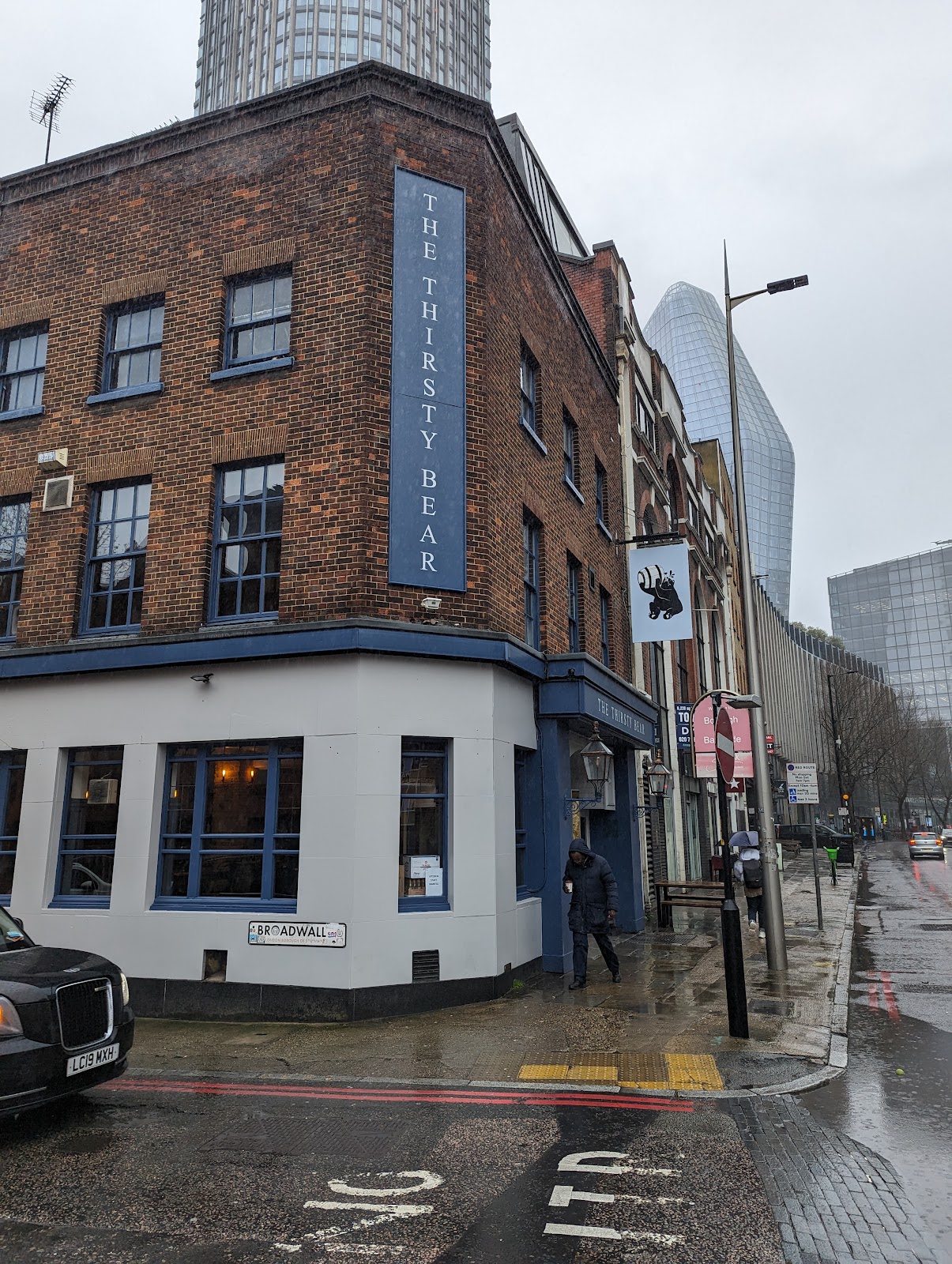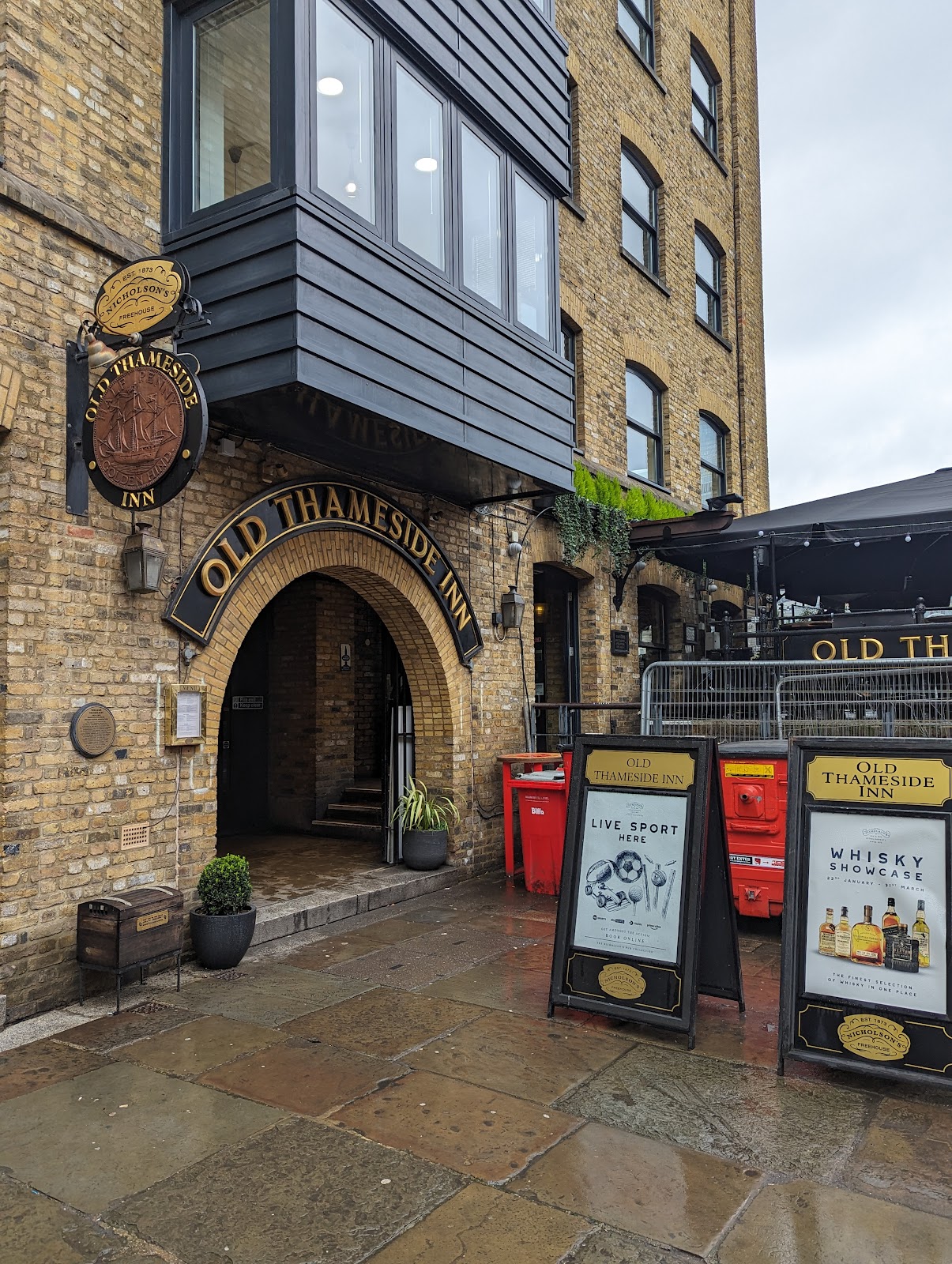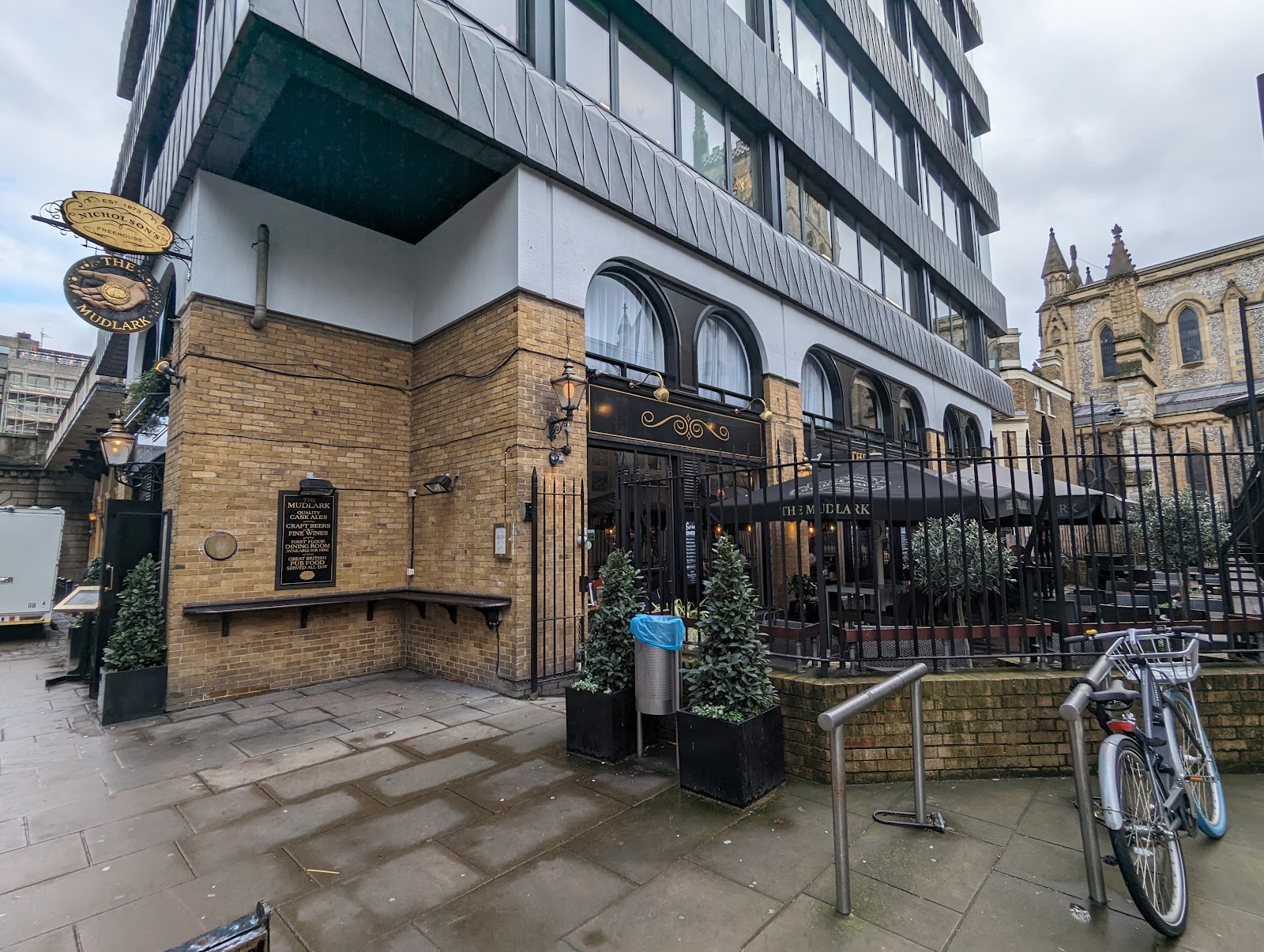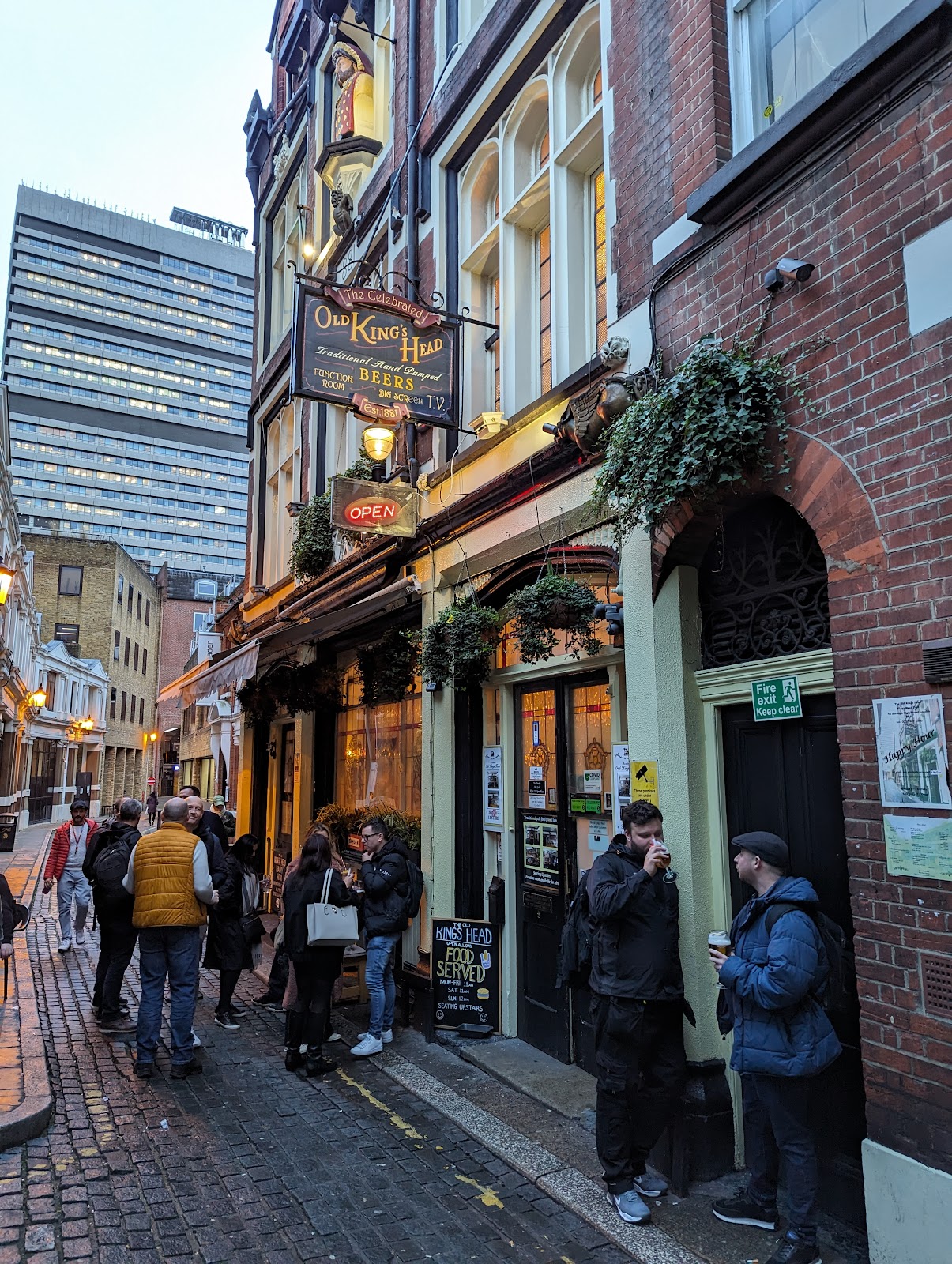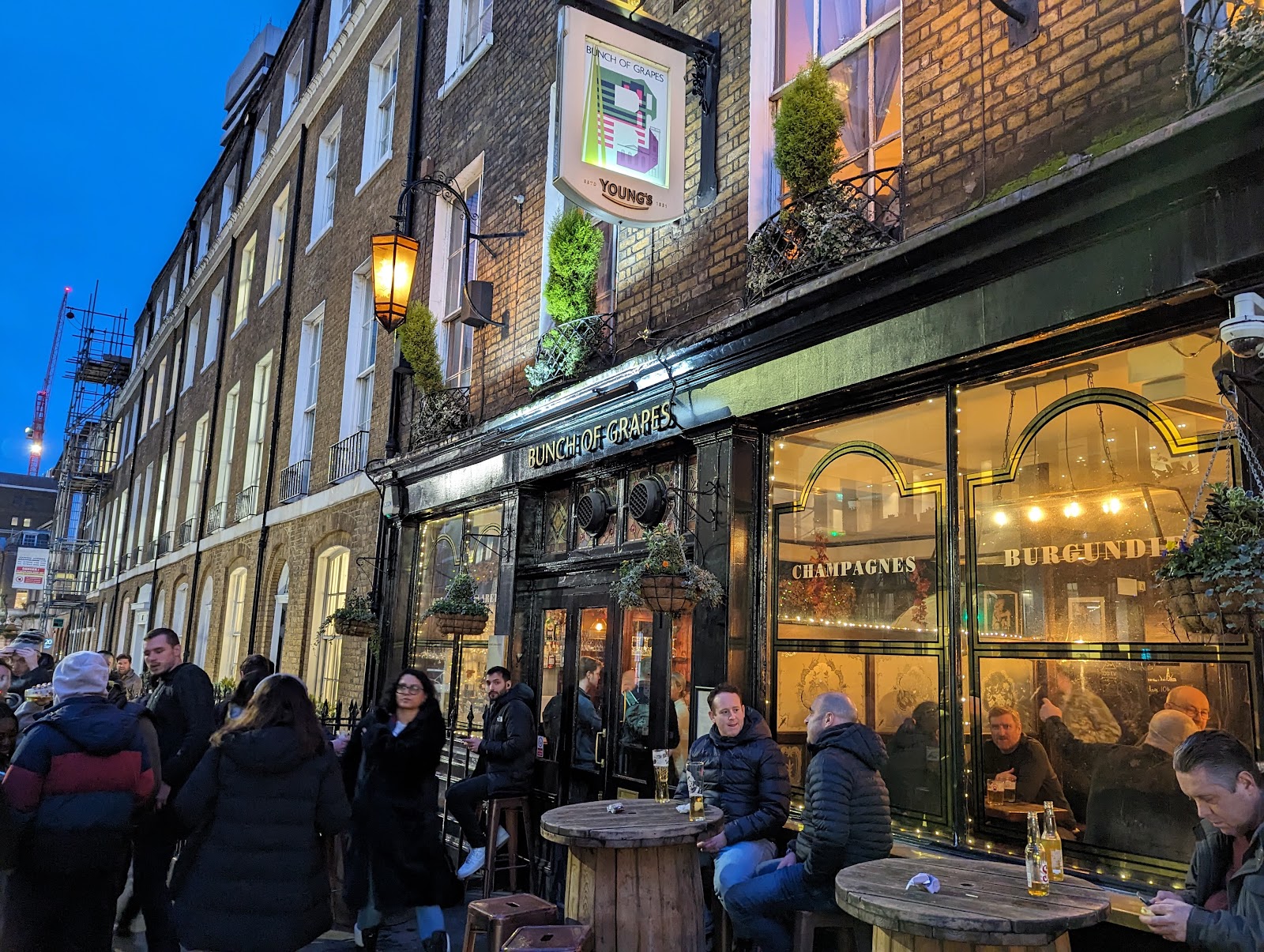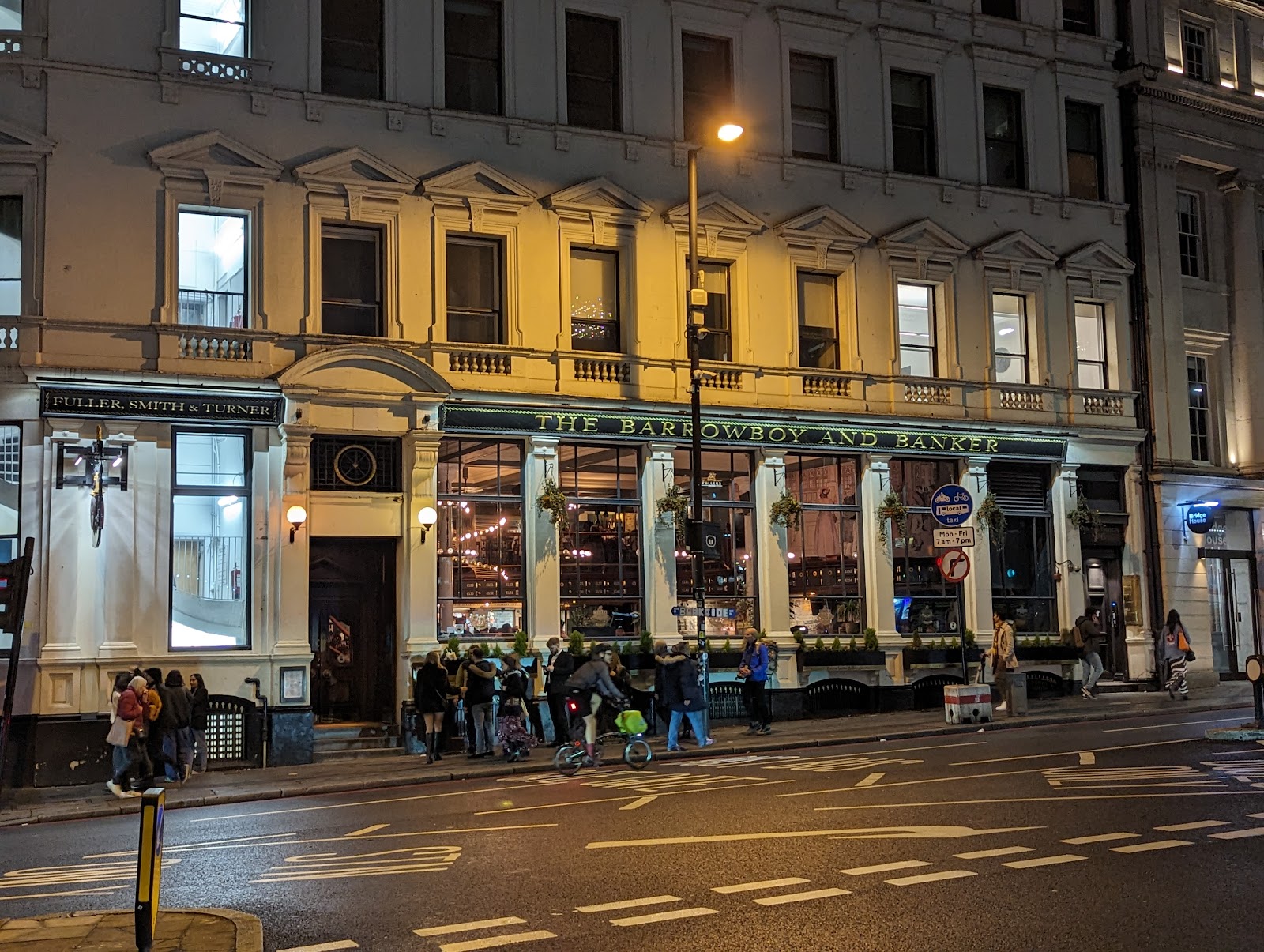Spring is finally here! The days are longer, the evenings are lighter and the weather is, allegedly, warmer and more settled than it has been after the gloomy days of winter. With that in mind, I was able to get and about last week. Forgive my absence last month. March ended up being a busy and expensive one but things should hopefully be back to a greater sense of regularity going forwards. Famous last words. Anyway, last week, I took it upon myself to make the journey over into Gloucestershire for what would be this particular county's first appearance in the blog (I think!). My aim was simple: investigate the city of Gloucester in search of its best pubs and, in general, acquaint myself with a place that I've heard mixed things about in the past. What followed would confirm some suspicions but also surprise me in pleasant and unexpected ways. But first, the history bit.
Gloucester is a cathedral city and the county town of Gloucestershire in the South West of England. Gloucester lies on the River Severn, between the Cotswolds to the east and the Forest of Dean to the west; it is sited 19 miles (31 km) east of Monmouth and 17 miles (27 km) east of the border with Wales. Gloucester has a population of around 132,000, including suburban areas. It is a port, linked via the Gloucester and Sharpness Canal to the Severn Estuary.
Gloucester was founded by the Romans and became an important city and colony in AD 97, under Emperor Nerva as Colonia Glevum Nervensis.
It was granted its first charter in 1155 by Henry II. In 1216, Henry III, aged only nine years, was crowned with a gilded iron ring in the Chapter House of Gloucester Cathedral. Gloucester's significance in the Middle Ages is underlined by the fact that it had a number of monastic establishments, including St Peter's Abbey, founded in 679 (later Gloucester Cathedral); the nearby St Oswald's Priory, founded in the 880s or 890s; and Llanthony Secunda Priory, founded in 1136. The town is also the site of the siege of Gloucester in 1643, during which the city held out against Royalist forces in the First English Civil War.
A major attraction of the city is Gloucester Cathedral, which is the burial place of King Edward II and Walter de Lacy; it features in scenes from the Harry Potter films. Other features of interest include the museum and school of art and science, the former county jail (on the site of a Saxon and Norman castle), the Shire Hall (now headquarters of the County Council) and the Whitefield memorial church. A park in the south of the city contains a spa, a chalybeate spring having been discovered in 1814.
Economically, the city is dominated by the service industries and has strong financial, research, distribution and light industrial sectors. Historically, it was prominent in the aerospace industry.
In 1926, the Gloucestershire Aircraft Company at Brockworth changed its name to the Gloster Aircraft Company because international customers claimed that the name Gloucestershire was too difficult to spell. A sculpture in the city centre celebrates Gloucester's aviation history and its involvement in the jet engine.
From the city's Roman name, Glevum, Anglo-Saxon migrants after 410, with their fledgling feudal structure, the Kingdom of Wessex, replaced the area's Romano-Celtic society and changed the city's name to Caerloyw, Gloucester's name in modern Welsh, while recognising the presence of the Roman fort. Caerloyw is a compound of caer, meaning 'fort, stronghold, castle', and loyw, a lenition of gloyw as it would have been pronounced by many speakers, meaning 'bright, shiny, glowy'.
A variant of the term -cester/chester/caster instead of the Welsh caer was eventually adopted. The name Gloucester thus means roughly "bright fort". Mediaeval orthographies include Caer Glow, Gleawecastre and Gleucestre.
Glevum was established around AD 48 at an important crossing of the River Severn and near to the Fosse Way, the early front line after the Roman invasion of Britain. Initially, a Roman fort was established at present-day Kingsholm. Twenty years later, a larger legionary fortress was built on slightly higher ground nearby, centred on present-day Gloucester Cross, and a civilian settlement grew around it. Probably the Roman Legion XX Valeria Victrix was based here until 66 and then Legio II Augusta as they prepared to invade Roman Wales between 66 and 74 AD, who stayed later until around 87.
Gloucester became a Colonia in 97 as Colonia Nervia Glevensium, or Glevum, in the reign of Nerva. It is likely that Glevum became the provincial capital of Britannia Prima.
Within about 15 years new privately constructed properties replaced the earlier barracks and public buildings, temples and bath houses were under construction in stone. Piped water began to be supplied. Drains and sewers were laid. On the site of the legionary principia an imposing central forum was laid out surrounded by colonnades and flanked on three sides by part-timbered ranges of shops. Closing off the south of the forum was the 100m x 40m Basilica. Many fine homes with mosaic floors were built in the town.
At its height, Glevum may have had a population of as many as 10,000 people. The entire area around Glevum was intensely Romanised in the second and third centuries with a higher than normal distribution of villas.
At the end of the 3rd century or the start of the 4th, major changes were made to the city's 2nd century wall. It was replaced in two stages by a stronger and higher one of stone resting on massive reused stone blocks. In the second stage, the blocks rested on deep timber foundation piles. Stone external towers were added; two parallel wide ditches were also cut in front of the new walls.
Remains of the Roman city can still be seen:
- Many archaeological artifacts and some in-situ walls in the Gloucester City Museum & Art Gallery
- The remains of the Roman and mediaeval East Gate in the East Gate Chamber on Eastgate Street.
- Northgate, Southgate, Eastgate and Westgate Streets all follow the line of their original Roman counterparts, although Westgate Street has moved slightly north and Southgate Street now extends through the site of the Roman basilica.
Withdrawal of all Roman forces and many societal leaders in about the year 410 may have allowed leading families of the Dobunni tribe to regain power within the now Roman-influenced, interconnected and intermixed Celtic Brythonic local people. This intermix is reflected by the fact a large minority of basic words and available synonyms in Welsh have a Latin base. In the Anglo-Saxon Chronicle Gloucester is shown as part of Wessex from the Battle of Deorham in 577. At some point afterwards, along with the rest of its shire excluding the Forest of Dean, Gloucester was part of the minor kingdom of the Hwicce. In 628, as a result of the Battle of Cirencester, that kingdom became a client or sub-kingdom of Mercia. From about 780, the Hwicce was no longer feigning any pretense as a kingdom and became part of Mercia. Mercia, allied by matrimony and sharing a desire to counter the Danish onslaught as had conquered swathes of the wider island at large, submitted to Alfred the Great's Kingdom of Wessex in about 877–883. A 20th century writer intuitively adds that Roman stem Gleu- Glev- was, doubtless, pronounced without any final consonant. Claudia Castra is mentioned in the 18th century as a possible Latin name related to the city.
The first bridging point on a navigable, defensive barrier, great river and the foundation in 681 of the abbey of St Peter by Æthelred of Mercia, favoured town growth; and before the Norman conquest of England, Gloucester was a borough governed by a portreeve, with a castle which was frequently a royal residence, and a mint. In the early 10th century the remains of Saint Oswald were brought to a small church here and shrine built there, a draw for pilgrims. The core street layout is thought to date to the reign of Æthelflæd in late Saxon times.
In 1051 Edward the Confessor held court at Gloucester and was threatened there by an army led by Godwin, Earl of Wessex, but the incident resulted in a standoff rather than a battle.
After the Norman Conquest, William Rufus made Robert Fitzhamon the first baron or overlord of Gloucester. Fitzhamon had a military base at Cardiff Castle, and for the succeeding years the history of Gloucester was closely linked to that of Cardiff.
During the Anarchy, Gloucester was a centre of support for the Empress Matilda, who was supported in her claim to the throne by her half-brother, Fitzhamon's grandson, Robert, 1st Earl of Gloucester (also known as Robert of Gloucester). After this period of strife ended with the ascent of her son Henry to the throne Henry II of England, Henry granted Robert possession of Cardiff Castle, and it later passed to William Fitz Robert, 2nd Earl of Gloucester son of Robert. The story of the Anarchy is vividly told in a series of 19th-century paintings by William Burges at the Castle.
Henry granted Gloucester its first charter in 1155, which gave the burgesses the same liberties as the citizens of London and Winchester. A second charter of Henry II gave them freedom of passage on the River Severn. The first charter was confirmed in 1194 by King Richard I. The privileges of the borough were greatly extended by the charter of King John (1200), which gave freedom from toll throughout the kingdom and from pleading outside the borough.
In 1216 King Henry III, aged only ten years, was crowned with a gilded iron ring in the Chapter House of Gloucester Cathedral. During his reign, Eleanor, Fair Maid of Brittany his cousin was briefly imprisoned at Gloucester Castle as state prisoner from 1222 to 1223, and from 1237 to 1238, in addition to sometime during the reign of King John.
Gloucester's significance in the Middle Ages is underlined by the fact that it had a number of monastic establishments, including St Peter's Abbey founded in 679 (later Gloucester Cathedral), the nearby St Oswald's Priory, Gloucester founded in the 880s or 890s, Llanthony Secunda Priory, founded 1136 as a retreat for a community of Welsh monks (now near the western bypass), the Franciscan Greyfriars community founded in 1231 (near Eastgate Shopping Centre), and the Dominican Blackfriars community founded in 1239 (Ladybellegate Street). It also has some very early churches including St Mary de Lode Church, Gloucester near the Cathedral and the Norman St Mary de Crypt Church, Gloucester in Southgate Street.
Additionally, there is evidence of a Jewish community in Gloucester as early as 1158–1159; they lived around present-day East Gate Street and had a synagogue on the south side, near St Michael's church. Gloucester was probably the home of Rabbi Moses, who established an important Anglo-Jewish family. The Jews of the town were falsely accused by the Dominican monks of murdering a child, Harold of Gloucester, in an attempt to establish a cult similar to that of William of Norwich, which failed entirely. Nevertheless, the accusations were recycled around the time of the Edict of Expulsion. In January 1275, Eleanor of Provence expelled Jews from all of the towns within her dower lands, and the Jews of Gloucester were ordered to move to Bristol but finding an especially difficult situation there, relocated to Hereford.
In the Middle Ages the main export was wool, which came from the Cotswolds and was processed in Gloucester; other exports included leather and iron (tools and weapons). Gloucester also had a large fishing industry at that time.
In 1222, a massive fire destroyed part of Gloucester.
One of the most significant periods in Gloucester's history began in 1378 when Richard II convened Parliament in the city. Parliaments were held there until 1406 under Henry IV of England. The Parliament Rooms at the Cathedral remain as testimony to this important time.
Gloucester was incorporated by King Richard III in 1483, the town being made a county in itself.
The City's charter was confirmed in 1489 and 1510, and other charters of incorporation were received by Gloucester from Queen Elizabeth I and King James I. Princess Mary visited Gloucester in September 1525 accompanied by her ladies and gentlewomen. She was met by the Mayor, John Rawlins, at Quedgeley. Her father Henry VIII and his then Queen, Anne Boleyn, visited in July 1535. They used Gloucester as a base for hunting trips to Painswick, Coberley, and Miserden. They left Gloucester for Leonard Stanley, on their way to Berkeley Castle.
Gloucester was the site of the execution by burning of John Hooper, Bishop of Gloucester, in the time of Queen Mary in 1555. In 1580, Gloucester was awarded the status of a port by Queen Elizabeth I.
The 16th and 17th centuries saw the foundation of two of Gloucester's grammar schools: the Crypt School in 1539 and Sir Thomas Rich's School in 1666. Both still flourish as grammar schools today, along with Ribston Hall and Denmark Road High School.
During the English Civil War, the fall of nearby Bristol encouraged the reinforcement of the existing town defences. The siege of Gloucester commenced in 1643 in which the besieged parliamentarians emerged victorious. The Royalist's plan of bombardment and tunnelling to the east gate failed due to the inadequacy of the Royalist artillery and the besieged sniping and conducting artillery fire on the Royalist encampment.
By the mid-17th century, only the gatehouse and keep of Gloucester Castle remained, the latter of which was being used as a gaol until it was deemed unsuitable and demolished in the late 1780s. By 1791, the new gaol was completed leaving no trace of the former castle.
In the 19th century the city grew with new buildings including Wellington Parade and the Grade II listed Picton House (c. 1825).
The 1896 Gloucester smallpox epidemic affected some 2000 residents.
During the Second World War, two petroleum storage depots were constructed in Gloucester. A Government Civil Storage depot with six 4,000-ton semi-buried tanks was constructed on the Berkeley Canal in 1941/42 by Shell-Mex and BP and connected to the pipeline that ran from the Mersey to the Avon. It was also connected to the Air Force Reserve Depot and a Shell Mex and BP facility for road and rail loading. Due to severe tank corrosion, it was demolished in 1971/2 and disposed of in 1976. The second depot was an Air Force Reserve Depot with four 4,000-ton semi-buried tanks constructed in 1941/42 by Shell, Shell-Mex and BP at the Monk Meadow Dock on the Canal. Originally, delivery was by road, rail and barge and pipeline. It was also connected to the docks and to the Shell Mex and BP installation for rail and road loading facilities and the civil storage site. It was transferred from the Air Ministry to the Ministry of Power in 1959, closed in the 1990s and disposed of in the later 2000s.
Gloucester's most important citizens include Robert Raikes (founder of the Sunday School movement) who is still commemorated by the name of Robert Raikes' House in Southgate Street. Its most infamous citizen was Fred West.
In July 2007, Gloucester was hit badly by a flood that struck Gloucestershire and its surrounding areas. Hundreds of homes were flooded, but the event was most memorable because of its wider impact – about 40,000 people were without power for 24 hours, and the entire city (plus surrounding areas) was without piped water for 17 days.
In 2009, Gloucester Day was revived as an annual day of celebration of Gloucester's history and culture. The day originally dates from the lifting of the Siege of Gloucester in 1643, during which the city held out against Royalist forces during the First English Civil War.
Prior to my arrival to Gloucester, whilst I knew a smidgeon of the city's rich history, I was largely ignorant of what else the city had to offer, a fact that I was hoping to correct during the course of my day. By and large, Gloucester is fairly easy to reach by train with journey times of just over two hours although, depending on the service, it is not always direct. Having changed trains at both Derby and Cheltenham Spa, thankfully with short turnaround times, I arrived at my destination shortly after midday on what was a pleasantly warm and dry Thursday afternoon. I was in good spirits, primarily due to my train journey being relatively uneventful and fairly smooth. Leaving Gloucester train station and negotiating some refurbishment work taking place immediately outside, I turned right and headed in the general direction of the city centre. A few yards further on, I crossed to the other side of the road and took the next left onto Northgate Street where, a short distance away, on the left, I would find my first stop for the afternoon. My magical mystery tour of Gloucester's drinking establishments would begin at the Northend Vaults.
Originally a merchant's house, the Grade II listed building that is now the Northend Vaults has been a pub since around 1660 but is believed to be much older. It was refronted in the mid-late 18th century, but also features later additions from the 19th and 20th centuries. The pub was formerly known as the Tut 'n' Shive in the mid 90s before becoming just The Vaults. After a brief period of closure at the end of 2013, it reopened in April 2014 under the current name. Previously a Craft Union pub, meaning it was part of EI's wet led pub chain, it is now operated by Stonegate. I was eager to see what a pub in Gloucester would have to offer. The pub's interior is a mix of original features and more contemporary characteristics. The front door leads into a small foyer-style space with seating to either side. The floors are bare wood and there are original beams in situ, along with whitewashed ceilings and green painted walls. The bar is fairly small and located roughly halfway down the room. To the rear is further seating, along with access to a patio garden. TVs are located in most areas of the pub, with an emphasis on sport or daytime television. The furniture is basic scrubbed wooden tables and chairs. The overall layout of the pub is roughly square. Upon the aforementioned bar, I was pleased to see two handpulls, although just one was in use, offering Wadworth 6X. I was greeted by the friendly landlady and the two regulars propping at the bar, both with thick Gloucestershire accents and before long I was retreating to a secluded table in one of the snug-like areas near to the door, with a half of 6X in my hand (priced at £2.10). I may have mentioned this more than once in previous blogs but I like to try and use my first destination of any trip as a way to get my bearings and absorb some of the feel for the wider location. Based on what the Northend Vaults had offered, I was expecting a mix of older 'locals' pubs and more modern venues catering more to visitors and tourists. Time would soon tell how accurate that assessment would be. The Northend Vaults had been a good place to start. I felt welcome and the beer on offer was well kept. Whilst not the best Wadworth I've ever drank, it was certainly tasty and refreshed me after my train journey. Where would my trip to Gloucester take me next?
Luckily, my next two locations are opposite each other and only a short walk from the Northend Vaults. Leaving the pub and turning left, I continued down Northgate Street. A few yards further on, pub number two came into view on the opposite side of the road. Crossing over, I approached the Imperial Inn.
Another listed pub, this former Mitchells and Butlers property is now owned by Punch Taverns. The pub is Victorian, as evidenced by the glazed green tiles and etched bar windows. The elaborate crest over the door, along with the tiling used to display the pub name, are also nods to its architectural heritage. I approached the door with a degree of trepidation but I needn't have worried, for reasons that will become very clear. Inside, the pub is one large room, a product of a 1985 refurbishment when three original, smaller rooms were knocked through into one large space. The bar is in the left hand corner of the room. Seating is arranged around the edges of the room, in the form of wooden tables and chairs. In general, the interior is relatively unchanged, barring the presence of TVs on a couple of the walls and a dartboard in one corner. The toilets are at the back of the room, through surprisingly narrow doors. The bar features 4 handpulls. Three of these were available at the time of my visit, with a choice of Bass and Fuller's London Pride, alongside Thatcher's Cheddar Valley cider. I decided on a half of Bass (£2.15) and made my way to a table opposite the bar. Then it dawned on me. The TVs in the bar were playing Kerrang. Could it be? Metallica came on the jukebox (Wherever I May Roam). It was true! This is a rock pub! A closer inspection of some of the internal decor, posters and flyers revealed that the Imperial Inn does indeed market itself as a rock pub. A very pleasant and welcome surprise! I hadn't expected to find anything of the sort here so I was very happy indeed to learn that this place existed. It also helped that the Bass was cracking. It was sorely tempting to stay for longer but I had a long itinerary planned so resigned myself to having to move on. Perhaps I'd have time for a revisit on my way back.
My next stop was a mere stone's throw away. Turning right out of the Imperial, I came to a road junction, across which stands the third pub of the day. Onto The Abbey.
What was once two pubs was converted into one large building some years ago. The Abbey benefits from close proximity to the Cathedral and is renowned for being particularly busy on Gloucester Rugby home match days. Operated by Stonegate, the Abbey was formerly part of Mitchells and Butlers Scream brand of student-oriented pubs but now forms part of the Crafted Social branch of Stonegate's estate. The pub footprint is large and rectangular with a long bar taking up the majority of the main room. The decor is light, bright and modern with neon signs, posters offering deals and slogans adorning the walls. A raised, paved and partly covered beer garden, with bright furniture, can be accessed through a door to the rear. The toilets are located in a nearby corridor. The rear of the pub is split level with a small flight of steps down to an area of pool tables. The seating is largely standard tables and chairs although there are areas of high stools and booth-style spaces near the entrance. Multiple TVs, showing various sports, can be found throughout. Like the previous stops, the pub was fairly quiet when I arrived but it's clearly a venue that does get very busy. On the bar, there are a bank of 6 handpulls. Only one of these was in use on the day but, seeing as it was providing St. Austell Proper Job, it wasn't all bad. I naturally ordered this and made my way to a small table towards the back of the room. The Proper Job (£2.30 a half) was decent. I don't see it on draught nearly enough so it was good to find it in good condition, especially in the kind of pub that wouldn't necessarily be associated with well kept ale.
I was well into the swing of things by now and it was back out into the glorious Gloucester afternoon. Leaving The Abbey, I turned left and followed the road along. Once I reached Pitt Street, I turned left again, making my way past one of the local grammar schools which either seemed to be returning from lunch or between lessons, judging by the number of uniformed children that were about. My next location lies at the end of Pitt Street, at the junction with St. Mary's Street and was a stop that I was very much looking forward to, given its significant reputation for cracking beer. Next stop: The Pelican Inn.
Dating from 1679, the Grade II listed Pelican is something of an institution in the city. Once briefly owned by Banks' Brewery from 1995-1999, during which time it was called the College Arms, it is now a family-run traditional alehouse, operated by Wye Valley Brewery. Other than the short period mentioned above, the pub has virtually always been called The Pelican, a name thought to derive from the local belief that some of its wooden beams came from Sir Francis Drake's ship The Golden Hind, which began life as The Pelican. Under Wye Valley's 12 years of ownership, the pub has gone from strength to strength. It is a multiple award winner of both regional and local Pub of the Year and Cider Pub of the Year titles and is the current holder of the Pub of the Year award from the local CAMRA branch. It is, perhaps unsurprisingly, listed in the 2024 Good Beer Guide, one of a half a dozen pubs in the city to be featured. I was about to find out why. The pub can be accessed either through the front door, which leads directly into the bar, or through a door in the rear garden, the way that I chose to enter. This took me down a corridor, through a small room adjacent to the bar space, and then into the bar itself. The bar space is small, with original beams, low ceiling and wooden floors, and hop flowers festooned above. Seating is in banquette and small table form. Additional seating can be found in the adjacent room and there is also seating in the garden. The walls are decorated with photos of the local area, alongside many items of brewery memorabilia. A noticeboard inside the front door displays CAMRA awards and notices about upcoming events. The bar is, safe to say, stocked. There are a whopping 10 handpulls, alongside a smaller number of kegs taps and there are also craft cans and bottles for consumption on the premises and for takeaway purposes. The majority of the cask offering comes from Wye Valley. On the occasion of my visit, 7 of their beers were available, specifically Hopping Mad, Butty Bach, Silver Fox, Hopfather, Wholesome Stout, HPA and Atomic Blonde but there were also 3 guest ales in attendance, in the shape of Pentrich Blizzard in the Pines, Grasshopper Devil's Horse and Neptune Pacu. I wasn't going to pass up Wye Valley beer in a Wye Valley pub for love nor money so, after a moment's perusal, I went for the Atomic Blonde (4.4%), billed as a blonde ale brewed with British hops, and parted with the unfathomably reasonable sum of £2 for a half, before finding a table almost opposite the bar. Everything I'd heard about this pub was spot on. The atmosphere was welcoming and friendly, the pub is a beer lover's dream and the beer itself is fantastic! Atomic Blonde is a limited release from Wye Valley and I was glad I'd had the chance to give it a go. It's equal parts fruity and floral with a bitterness from the hops coming through. It certainly seemed to disappear very quickly, which is always a good sign! The Pelican fully deserves the accolades it has acquired and I have no doubt that there will be more in its future.
I made my way out of The Pelican, regretfully it must be said, and retraced my route to the front of the building before turning left. This took me down behind the cathedral grounds and through an area of housing. Reaching the other side of a small square, I turned left into Westgate Street and continued. Finding the impressive Cathedral on my left, I walked a short distance until I saw a small passageway on the right hand side which would lead me to my next destination. Another pub to feature in the 2024 Good Beer Guide, this is The Fountain Inn.
An ale house is believed to have existed on this site since 1216, the year in which a 9 year old King Henry III was crowned at the nearby Cathedral. He would go on to reign for 56 years. The first known written reference to a pub on this site is in the year 1455, when it was known as 'Savage Ys In'. The present building dates from the 17th century. King William III is said to have ridden his horse up at a shallow flight of stone stairs in this building as a show of contempt for the Jacobites that used to meet here in support of the deposed King James II. In its current guise, a passage from Westgate Street leads through to an enclosed courtyard and the front of the pub. The leads through into the Cathedral Bar which features a panelled ceiling and a carved stone fireplace. The right hand side of the room features low tables and chairs and access to the toilets. The left features more of the same, along with banquette seating and high tables and stools. The bar is roughly central and boasts 7 handpulls. All of these were occupied when I walked in and offered an interesting array of options: Dartmoor Jail Ale, Black Sheep Best Bitter, Adnams Southwold, St. Austell Tribute, Wye Valley HPA, Stroud Tom Long and Timothy Taylor Golden Best. Tom Long is a beer I've long been meaning to try so this one got the nod here. I managed to procure a stool at a high table next to the door with my half (£2.25) and take in my surroundings. This is another atmospheric place for a beer. The history of this place seeps from the walls and it's somewhat overwhelming to think that people have enjoyed coming here for over 800 years. I certainly enjoyed myself. Tom Long (3.8%) is an amber session bitter. It's full bodied and carries caramel notes and a spicy orange aroma. The beer is named after the mythical highwayman of Minchinhampton Common. Whilst weaker than I would normally go for, it more than makes up for it in flavour! The Fountain is another absolute highlight from my trip that I'm glad I took the time to visit.
Another Good Beer Guide 2024 listed pub was next on the agenda. Making my way back out of the passageway from which I'd entered, I turned right and continued for a short distance down Westgate Street until I reached another passageway, Bull Lane. Turning into this, I soon encountered The Drunken Duck.
The smallest pub in Gloucester, and one of two micropubs on my trip, The Drunken Duck was formerly known as Angie's Bar. Downstairs is one small room with a bar at the end and a small number of tables opposite. There is a unisex toilet immediately adjacent to the bar. An upstairs room is a chill out area featuring board games, music and a piano. Additional seating can be found outside the front of the pub. Duck themed artwork features throughout On the bar sits a bank of 4 handpulls and a trio of these were proffering goodies when I walked in. As well as the house beer, Duck House Bitter, brewed by Butcombe, I had also had the option of Bristol Beer Factory Everytime and Butcombe Lucky Irish Stout. I fancied something darker this time and so opted for the stout (£2.25 a half) before pulling up a chair at a table near the door. Even though, besides myself, the only other customers were a trio of American tourists and a regular with his dog Doris (a lovely, and very friendly spaniel who was insistent on a fuss and even jumped onto my lap), the pub did not feel crowded despite its small size. Instead I felt welcomed and even felt comfortable enough to join in with a conversation about how much of a pain in the arse it is driving around Birmingham. The beer here was also sensational. Lucky Irish Stout (4.8%) is packed full of chocolate and coffee notes with light toastiness, dark fruitiness and a dry finish. It was absolutely exceptional! The most recent trio of pubs had been brilliant. Would the theme continue?
Up to this point, my trip to Gloucester had gone swimmingly. However, disappointment loomed on the horizon. Having left the Drunken Duck, I continued to the end of Bull Lane and turned left. Shortly after, I arrived at the aptly named Cross Keys Lane where, you won't be surprised to learn, I found the Cross Keys Inn.
This 16th century inn is tucked away but relatively easy to find. Two doors lead to one of two bars, one small and one much larger. The smaller bar is square with a small number of tables opposite as well as in a small alcove nearby. The larger room is split level, with a raised stage area for live music. Decor throughout is wooden beams, whitewashed walls and wooden floors. The Cross Keys is a shrine to both Motown and Northern Soul, with a soundtrack to match, and features framed photos of various performers and luminaries from both musical genres across the walls, along with framed vinyl records. During my research into pubs to visit, evidence suggested that the pub serves real ale. Imagine my disappointment when this turned out not to be the case. No handpumps were to be seen anywhere when I walked in and I instead resorted to half a Guinness (£2.20). The landlord was welcoming enough but that's not why I was here. I'm sure the music is enough of an attraction locally and it's clear that the pub attracts a crowd based on that but real ale lovers are better served elsewhere.
Following the damp squib of the Cross Keys, I was hoping for better from my next destination. Exiting Cross Keys Lane from the opposite end to where I'd come in, I found myself on Southgate Street. A quick stop for lunch revitalised me and I followed the main street down to an archway, leading to a small side street called Marylone, opposite Robert Raikes' House (which is now a pub but unfortunately it's a Sam Smith's venue). Marylone took me into the shadow of St. Mary de Lode church and to a medieval building opposite, which now houses Cafe Rene.
This converted building dates from the mid-18th century and is Grade II listed. Inside, a single bar in one corner serves two rooms. The front room is a bar space with wooden tables and chairs but also unusual features such as an original stone wellhead in the centre of the room and a carved baptismal font over to one side. The rear room is laid out for dining. The walls and ceiling throughout are decorated with empty wine bottles. There is also further seating outside, to the front of the building, in the form of picnic tables. The whole layout is quite quirky but it did also feel a bit open. The rooms are large and it almost feels like the space isn't being fully utilised. The good news is though, there is real ale here. Three handpulls occupy space on the bar with offerings from within the Greene King range as well as a guest. On the day, I had to choose between Greene King Yardbird, Belhaven 80/- and North Cotswold Windrush Ale. I've not had nearly enough beers from North Cotswold so the Windrush Ale (3.6%) would do the trick at £2.20 for a half pint. I ventured outside to enjoy the sunshine only to discover that the sun had gone in, but it wasn't cold so I settled onto a picnic bench to enjoy my beer and the view of the church opposite. Another weaker option by my standards, Windrush Ale is an amber coloured session ale brewed with English hops. It's malty on the palate and slightly sweet. It's thirst quenching and refreshing enough. Cafe Rene is an odd venue. I wasn't entirely sure what to expect when I first arrived. There's something odd about the atmosphere inside. I'm not sure whether it's the lack of windows which makes it feel like being underground, or whether it's the presence of such random items as a well and a baptismal font in a pub like this. Maybe there's another explanation. The pub is allegedly one of the most haunted buildings in Gloucester, boasting 6 alleged spirits. Amongst the spiritual inhabitants are believed to be a 12th century monk who roams the building with a candle, an elderly woman and a ginger-bearded middle-aged man. The pub was previously known as the Greyfriars Inn so perhaps at least one of these figures dates from this time. The most persistent activity though is that of a poltergeist which has been known to pour spirits from optics, smash glasses and throw bags of crisps around the place. Whatever the explanation for the claimed phenomena, there's certainly something strange in the air at Cafe Rene. No, I didn't find out whose birthday it was........
The next segment of the afternoon required a little bit more walking before it got underway. Heading back out onto Southgate Street, I turned left and headed out of the city centre proper and in the direction of the quayside. The whole area around Gloucester Quays has been significantly modernised in recent years and now includes a whole host of shopping outlets, restaurants and upmarket drinking venues. One such of the latter would be by next stop. Crossing an open square, and ignoring a branch of Wetherspoons, I reached the quay itself. Located on the canalside is the Gloucester Quays branch of Brewhouse & Kitchen.
Part of the national chain of brewpubs, this modern venue overlooks the Gloucester to Sharpness canal and is listed in the 2024 Good Beer Guide. The interior is modern with exposed ductwork, bespoke lighting and high ceilings. The myriad windows allow a bright and airy feel throughout. As with the other venues across the country, a small brewing kit can be seen in one corner where beers are created especially for the pub. Seating takes the form of both tables and booths and is largely of wooden design. Seating can also be found outside for warmer days. The bar is L-shaped and at the centre of the room. The seating is arranged around the interior and a staircase to one side leads up to the toilets. A piano can be found at the bottom of the staircase. On the bar are 4 handpulls, displaying the pub's own brews. On this occasion Shed Head IPA (x2), Stevedore Bitter and Project Cask XPA were available. I went for the latter (£2.55 a half) and found a table over to one side where I also discovered that the venue features TVs which, at the time, were showing the 80s buddy cop movie Turner & Hooch. The XPA (4.5%) is an April seasonal brew across the chain. It's a pale ale with big, citrus hop flavours and tropical notes. It's a very very nice beer, tasting like summer in a glass. I like Brewhouse & Kitchen as a chain and I like what they do with their venues. Whilst they might be a bit modern for some purists, the beer is great and their model is strong. Plus, with all the fuss about beer miles and locally produced beer, how much more local can it get when you're drinking beer in the same room in which it is brewed?
I could have stayed at Brewhouse & Kitchen for another but time was moving on and I had to as well. I retraced my steps back through the Gloucester Quays development until I found myself back on Southgate Street. Turning right, I continued on until I saw my next destination on the right hand side. I was about to have another frustrating experience, this time at Baker Street.
Formerly the Hauliers Arms, Baker Street is a family-run traditional pub dating from the Victorian era. A recent refurbishment has completely updated the interior, which is carpeted throughout. Sherlock Holmes memorabilia features in some of the decor but the pub has no connection to Arthur Conan Doyle or his most famous creation and is simply named after a road that once ran beside the pub but has been truncated by the Gloucester Quays development. This is one of the few pubs in Gloucester, especially in the city centre, that has retained a skittle alley, which is around the corner from the bar. The bar runs along one side of the room. The seating is traditional wooden tables and chairs and the lighting is subdued. A large projector screen occupies one wall of a slightly raised area and there are further TVs to the rear. Sadly, despite the exterior signs loudly proclaiming the presence of cask ale, none can be found here. No handpumps are located on the bar or anywhere else and, on the day of my visit, there was an even bigger issue for the pub as a whole. In lieu of the absence of cask, I attempted to order Guinness but was thwarted in this endeavour as none of the draught products were available. No explanation for this was given but I suspect that this must have been a cellar problem. I find it hard to believe that a pub would completely run out of draught products, even with supply issues, so I'm inclined to blame a technical fault. The end result of this was that I was restricted to fridge products, meaning that I had to lower myself to bottled lager and ultimately paid £3.30 for Estrella which I drank as quickly as possible.
Determined to put a second negative experience behind me, I continued my journey down Southgate Street, eventually reaching a major road junction. Continuing straight, onto what had now become Bristol Road, I was only a couple of minutes from the next pub. I soon saw it over the road and, negotiating some awkwardly placed temporary traffic lights, I made my way to the Linden Tree.
This Grade II listed Georgian terrace building sits at the end of a row of 10 houses. Building began in 1836 and the row was originally known as Theresa Place. It is now a Good Beer Guide 2024 beer destination pub. The interior features beamed ceilings and an open log fire with an unusual canopy. The front bar features a variety of seating. To the rear can be found a skittle alley, function room and sports bar and there is small patio to the front with picnic table style seating. All manner of bric-a-brac and artefacts are displayed throughout the pub. One bar faces into the front toom and includes 6 handpulls. Three of these were in use on the day in question, with a choice of Wye Valley Butty Bach and HPA alongside Wadworth 6X. Torn between the two Wye Valley beers, I swung for the HPA (£2.10 for a half) and took a seat at a table opposite the bar. The HPA was in excellent condition, fully supporting the Linden Tree's GBG listing. Whilst enjoying my beer, I briefly caught the attention of a Shar-Pei who was investigating the inside of the pub whilst taking a break from helping his human dad paint the benches outside. I was glad that the Linden Tree had lived up to its reputation after my exertions at Baker Street. It's a comfortable and cosy pub that takes pride in its offering and its connections to the local community.
I had reached the furthest outwards point of my journey so I now began my way back towards the centre, so I would be better placed to easily reach the station in plenty of time for my return train. I wasn't quite done with pubs yet though. On my way down Southgate Street I had identified a pub that hadn't been on my initial itinerary that I thought would be worth a punt. To that end, I retraced my steps and entered The Tall Ship.
The Tall Ship was originally built, in the Italianate style, in the mid to late 19th century, when it was known as the British Flag. In the 1980s, it became The Tall Ships, at which time it was owned by Wadworth. Red Oak Taverns acquired the lease in April 2021 and carried out a major refurbishment that same year. The building has been Grade II listed since 1998 and still retains some of the original architectural features, including sash windows with stone frames and moulded cornices and architraves. It is unclear exactly when the name of the pub became the singular 'tall ship' but this is most likely linked to the 2021 upgrade. Internally, the pub is large with a central bar and a two-bar layout. The front bar features stools at the bar as well as wooden tables and chairs. A mirrored bar back often has amusing quotes written on it. The rear room is adjacent to an outside patio, which was refurbished in 2015. As it turned out, this 'wild card' entry would prove to be a good choice. Amongst the quartet of handpumps, one was in use, with Wye Valley Butty Bach available (£2.10 a half). I took a vacant seat at the bar and enjoyed the sounds of conversation from the regulars and staff around me. The beer was cracking too! I've had Butty Bach many a time in both cask and bottled form and this was up there with the best.
I had just two pubs remaining on my jaunt around Gloucester and I was intrigued to see what they had to offer the intrepid beer explorer. Carrying on down Southgate Street and then onto Westgate Street, my penultimate destination was not far away. Time now for the New Inn Hotel.
The New Inn is a very old building. It originally came into existence in 1350 when it was built as a pilgrims inn for the accommodation of visitors to the shrine of Edward II in St. Peter's Abbey, which is now Gloucester Cathedral. After falling into disrepair, it was rebuilt in 1450 by a monk named John Twyning as a hostelry for the Abbey. Following the Dissolution of the Monasteries, the inn passed to the Dean and Chapter of the Cathedral and was leased various times until it was sold in 1858. Following the death of Edward VI in 1553, Lady Jane Grey was proclaimed queen from the balcony of the New Inn in an attempt to keep the Protestant succession alive. Her ill-fated reign lasted 9 days before she met her death by execution at the Tower of London under orders of 'Bloody' Queen Mary I. Entry to the inn is through a carriageway from Northgate Street and it is believed to be the oldest surviving complete example of a Medieval galleried inn in Britain. These galleries would have been perfect for performances and many travelling minstrel companies performed here including, it is believed, William Shakespeare himself. Plays are still occasionally performed in the courtyard. The courtyard itself leads to many different areas. A restaurant for guests is to the left, with the bar area, open to guests and visitors, to the right. A further bar area is to the rear and hotel rooms are accessed up a flight of stairs in the corner. Picnic tables provide outside seating. I was excited by the history of this place but much less so by the beer choice. Once again, real ale was non-existent. Guinness was at least available here though so I settled for a half of that (£2.50) and took a seat on a high table by the window overlooking the historic courtyard and enjoying the pop-punk soundtrack, which was strangely at odds with my 15th century surroundings. Historically, this place is fascinating. Just don't come here if you're not a fan of keg beer. Still, there is some additional interest. The inn is allegedly very haunted and holds regular overnight paranormal investigations. Primary activity seems to be poltergeist like with glasses being smashed and drinks spilled, including one particularly alarming event in 2010 when a full pint slid the length of a table, with nobody anywhere near it, and smashed on the floor as if dislodged by unseen hands. The whole incident was caught on CCTV and reported on the regional news, adding to the inn's reputation. Additionally, children's disembodied voices have been heard and even captured on recording devices, when no children are known to be present. Spooky stuff indeed.
Back on the corporeal plane, my Guinness glass was empty and, whilst I was enjoying the music, I had one more place to tick off. Heading down Northgate Street, I turned off onto St. Aldate's Street. My journey would come to a close at the Turks Head Inn.
Gloucester's first micropub, the Turks Head originally stood on Southgate Street before relocating to its present space in 2022. A central bar serves a square room with seating on banquettes and low tables to the right and inside the large front windows. The left features standing room as well as toilet access. The Turks Head is Good Beer Guide 2024 listed and also has a number of additional quirks that bear mentioning. Be aware that the pub only accepts payment in cash and mobile phones and other similar technology are steadfastly unwelcome. In my case, I used my phone to take the above photo and then stowed it away before I entered and left it in my pocket until I left. Children are also not permitted. The Turks Head is an adult only environment that adheres to traditional values and eschews the trappings of modern technology. In this case though, that's definitely not a bad thing. A bank of 4 handpulls line the bar. When I entered, three of these were in use offering a pale, a red ale and a dark beer. Namely, the available beers were Milestone Cushty Peeve, Parkway Fire & Blood and Wantsum UXB. I had already decided that I would finish my day off with a pint and, as the Turks Head sells all of its cask ales for £3.80 all day every day, it would have been rude not to. I went for the Cushty Peeve (4.5%), a hazy pale ale. This proved to be a great choice with big citrus hop notes, grapefruit and pine on the palate and a crisp finish. Staying for another was tempting but I had no time. The Turks Head is a good example of a micropub that leans more towards a clientele who prefer an escape from our modern world of 24 hour doomscrolling. Some may balk at not being able to pay by card but it's not like you haven't been forewarned. I don't particularly mind if some pubs refuse to take card or cash as long as I make the effort to find out in advance and I'm prepared. After all, as long as I can pay for my beer, I'm not bothered about how.
With the last drops drunk and the last pub ticked off, I was done. I made my weary way back to the train station for my return trip, which was thankfully direct. Once settled in my train seat for the 2 hour and 15 minute journey back, safe in the knowledge I wouldn't have to get off until Nottingham, I reflected on how my afternoon had played out. Gloucester had been an interesting one. It had, in some ways, confirmed some things that I'd previously heard about it but, in other ways, it had exceeded my expectations. I found and enjoyed excellent pubs but I also endured a couple of venues that were a bit of a letdown. This isn't reflective just of Gloucester as a sole entity though. There are other places where cracking pubs sit side by side with venues that maybe need to do a bit more. I don't doubt that the venues in question all attract their regulars and keep their custom, as I doubt that they would still be open otherwise, but it is frustrating when pubs turn out to be less than expected. The flipside of that is the joy and surprise when a pub turns out to be much better than predicted, which has happened more than a few times during the course of my adventures. Gloucester should perhaps be spoken of in the same breath as Peterborough. Places where modernity and tradition collide in a microcosm of the wider country. Was my visit worth it? Yes. Did I learn a lot? Yes. Is it all a bit random and odd? Definitely. But what is life without adventure.
Pub of the day: The Pelican. Great atmosphere, wonderful aesthetic, cracking beer.
Beer of the day: Butcombe Lucky Irish Stout. Just fantastic.
Biggest surprise: The Imperial Inn. I was not expecting a rock pub when I walked in.
















